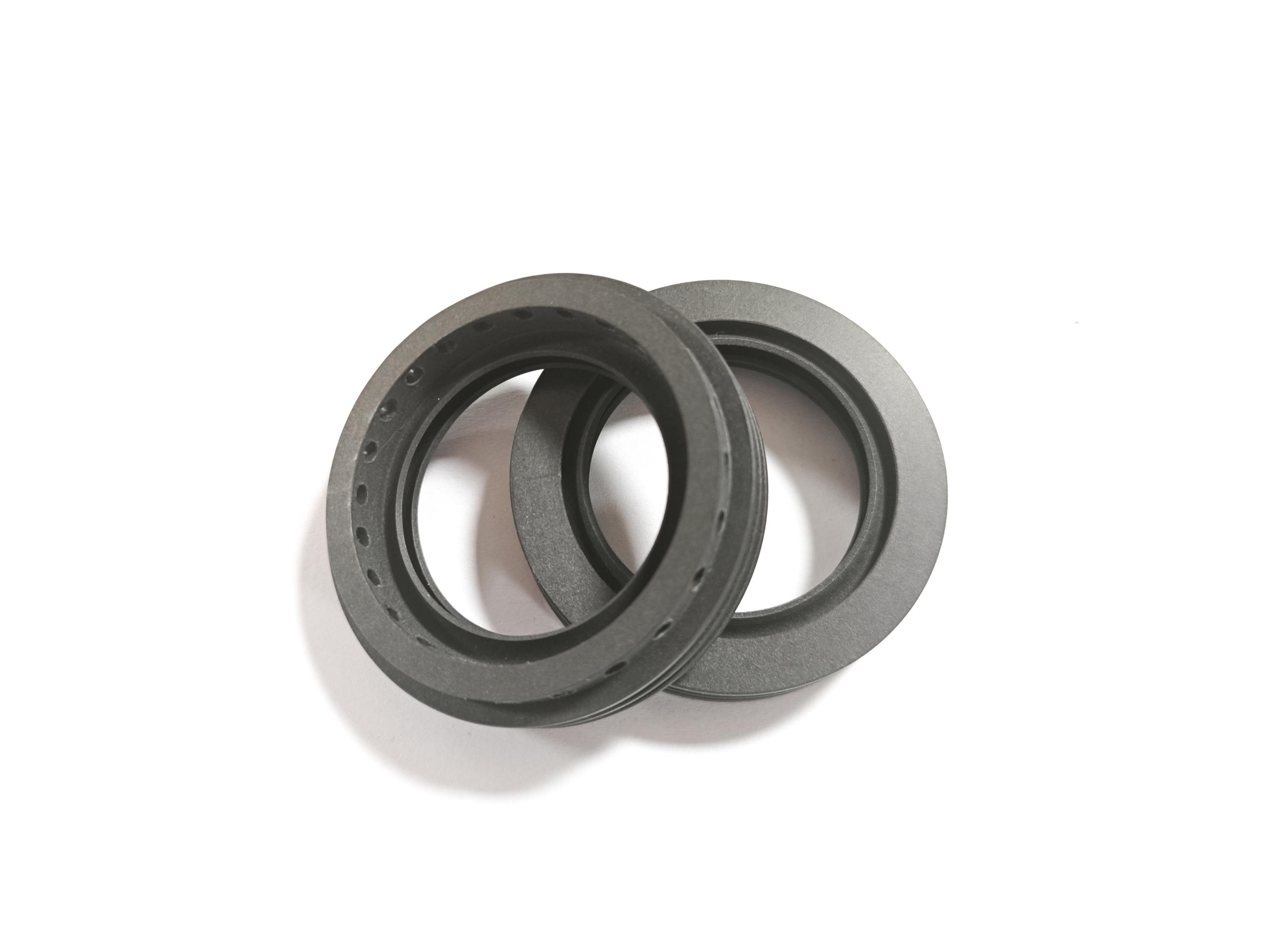1. Core Modification Technologies
| Filler Type | Modification Mechanism | Performance Gains |
|---|---|---|
| Carbon Fiber | 3D reinforcement network | Compressive strength ↑300% · Wear resistance ↑10x |
| Graphene | Thermal conductivity pathways | Thermal conductivity ↑15x · μ ↓40% |
| Nano-ceramics | Crystal gap filling | Hardness ↑220% · Creep resistance ↑400% |
| Bronze Powder | Reduced thermal expansion | Dimensional stability ↑ · PV limit ↑35% |
Process Innovation: Plasma grafting enables covalent bonding between fillers and PTFE chains.
2. Unmatched Advantages
- Temperature Range: -200°C to +290°C continuous operation
- Self-lubrication: Dynamic μ=0.03 (lubricant-free lifetime service)
- Chemical Inertness: Resists 98% H₂SO₄, 40% NaOH; USP Class VI certified
- Non-stick Property: Surface energy 18 mN/m (prevents material buildup)
3. Industry Applications
**► Steel Continuous Casting**
- Solution: Carbon fiber-reinforced PTFE seals
- Result: 6-month service life at 300°C (was 2 weeks)
**► Semiconductor Etching Tools**
- Solution: Graphene-modified PTFE seals
- Result: 18-month leak-free operation; contaminants <0.1 ppm
4. Technical Selection Guide
| Challenge | Optimized Formula | Performance |
|---|---|---|
| High-speed rotation (>25 m/s) | Carbon fiber + Nano-MoS₂ | PV >5 MPa·m/s |
| Ultra-high pressure (>70 MPa) | Ceramic fiber reinforcement | Collapse resistance >100 MPa |
| High vacuum (<10⁻⁶ Pa) | Glass fiber gradient | Outgassing <10⁻⁹ Pa·m³/s·m² |
5. Operational Economics
Automotive seal manufacturer case (10M units/year)
| Metric | Traditional | Modified PTFE | Improvement |
|---|---|---|---|
| Service life | 30,000 km | 150,000 km | +400% |
| Warranty claims | 1.8% | 0.15% | -92% |
| Line yield | 89% | 98.5% | +10.7% |
| Annual savings | - | $2.3M | - |
Post time: Jun-30-2025

